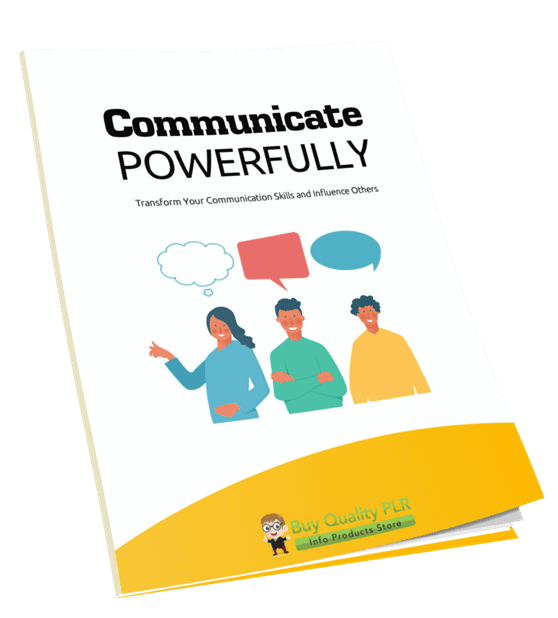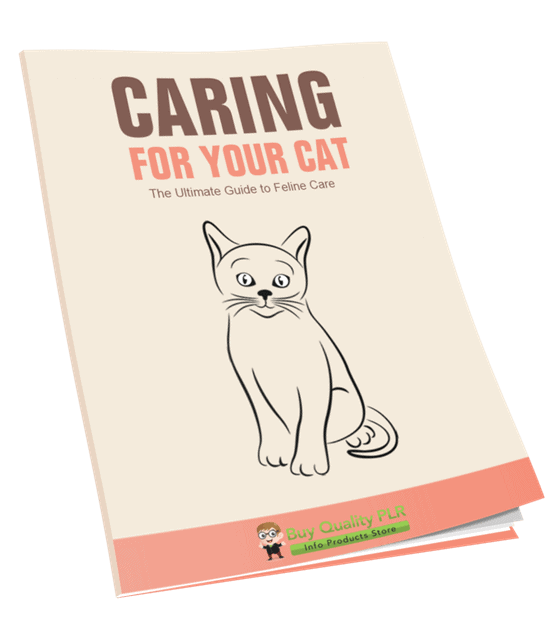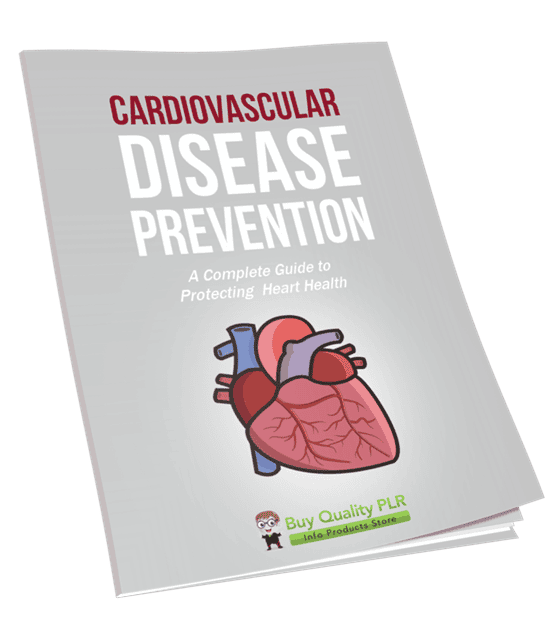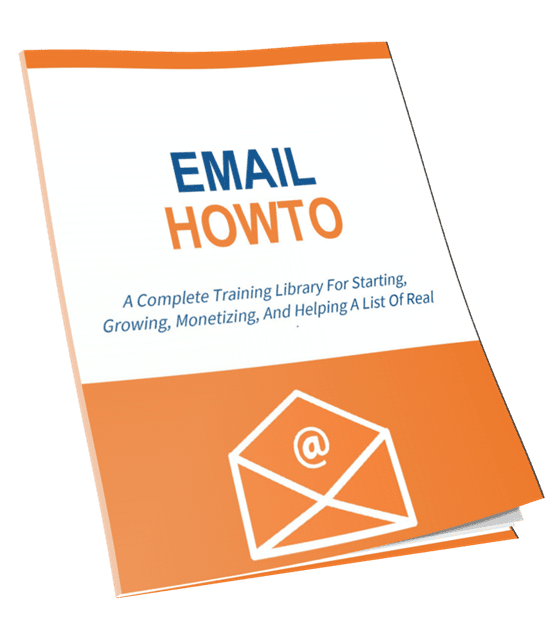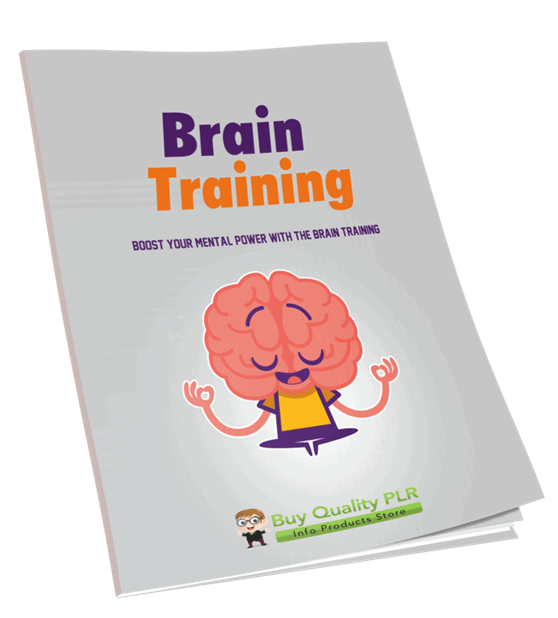
Brain Training PLR Course 22k Words
in Mental Health PLR , Mental Health PLR Ebooks , PLR Checklists , PLR eBooks , PLR eCourses , PLR List Building Reports , Premium PLR , Premium PLR eBooks , Premium PLR Reports , Premium White Label Brandable PLR Coaching Courses , Private Label Rights Products , Self Help PLR , Self Improvement PLR , Self Improvement PLR EbooksChoose Your Desired Option(s)
has been added to your cart!
have been added to your cart!
#braintraining #mindpower #mentalclarity #plrcourse #brainhealth #plrcontent #selfimprovement #personaldevelopment #memoryboost #mindhacks
Boost Your Mental Power with the Brain Training PLR Course
Welcome to the Brain Training PLR Course – your ultimate guide to unlocking your brain’s potential! This comprehensive, step-by-step course is designed to sharpen your mental skills, enhance your focus, boost your memory, and unleash your creative power. Whether you’re an individual seeking to improve your cognitive health or a business looking to offer valuable content, this course provides you with everything you need.
Course Overview:
The Brain Training PLR Course is a 20,569-word package that guides you through proven strategies to train your brain. From improving memory and focus to unlocking creativity, this course is designed to be accessible for beginners while offering valuable techniques for those with a little more experience.
Each module is packed with actionable steps, making it easy to apply what you learn to your daily routine. Whether you’re looking to enhance your mental capabilities or use this course for your audience, you’ll find value in every section.
Presenting…
Brain Training PLR Course 22k Words

What’s Included in This Course
The Brain Training PLR Course comes with 5 in-depth modules, each offering powerful techniques to help you sharpen your mental faculties:
Module 1: Understanding Your Brain
This foundational module helps you understand how your brain works, providing insight into the importance of brain health and the impacts of stress on cognitive functions.
- Step 1: Know the Basics
Explore the parts of the brain responsible for thoughts, memory, and creativity. Understanding the science behind how your brain functions is the first step in optimizing it. - Step 2: Brain Health Matters
Learn about essential nutrients, habits, and exercises that keep your brain in top shape. You’ll also discover what activities and foods can have a positive impact on cognitive function. - Step 3: Stress and Its Impact
Stress can have a significant negative effect on your brain. In this step, we discuss how to combat stress effectively, boosting mental clarity and focus. - Step 4: Setting the Stage
Establish a daily routine to optimize brain function and create an environment conducive to mental growth.
Module 2: Enhancing Memory
In this module, you’ll learn how to boost your memory retention using effective techniques and practices.
- Step 1: Master the Art of Mnemonics
Unlock the power of memory tricks, like acronyms, chunking, and visualization to improve recall. - Step 2: Practice Makes Perfect
Engage in memory-boosting activities such as puzzles, games, and exercises that help you improve your recall abilities. - Step 3: Power of Association
Learn how associating new information with things you already know can enhance memory retention. - Step 4: Regular Reflection
Incorporate regular reflection into your day to improve long-term memory retention and make recall easier.
Module 3: Boosting Focus and Concentration
Learn to harness the power of focus and concentration through techniques that help you manage distractions and boost productivity.
- Step 1: Mindfulness and Meditation
Practice simple mindfulness and meditation exercises to train your brain to stay present and focused on the task at hand. - Step 2: Tame the Digital Distractions
Discover how to use techniques like the Pomodoro Technique to manage your time effectively and reduce digital distractions. - Step 3: Break It Down
Learn how breaking large tasks into smaller, manageable steps can keep your brain engaged and improve concentration. - Step 4: Build Your Focus Muscle
Practice short, daily focus sessions and gradually increase their length to strengthen your attention span.
Module 4: Unleashing Creativity
In this module, you’ll explore methods to unleash your creative potential and think outside the box.
- Step 1: Embrace Curiosity
Learn to approach problems from new perspectives by asking more questions and staying open to new ideas. - Step 2: Doodle Your Ideas
Engage in creative exercises like doodling or mind mapping to open up new avenues for innovative thinking. - Step 3: Play with Possibilities
Push the boundaries of conventional thinking by experimenting with “What if?” scenarios. - Step 4: Build a Creativity Toolkit
Build a collection of creative resources, exercises, and tools that inspire your imagination every day.
Module 5: Sustaining Your Brain Power
Learn how to maintain optimal brain health and ensure your mental skills continue to grow.
- Step 1: Stay Active
Incorporate physical exercises like yoga, walking, and other activities to boost brain health and improve cognition. - Step 2: Lifelong Learning
Engage in continuous learning by picking up new skills, hobbies, or knowledge to keep your brain engaged and growing. - Step 3: Sleep Smart
Learn about the importance of quality sleep and how to develop a bedtime routine that ensures restful, brain-rejuvenating sleep. - Step 4: Track Your Progress
Keep a journal to track improvements in your mental abilities and celebrate milestones along the way.
Additional Bonuses Included:
- Brain Training Checklist (372 Words)
A quick reference checklist to help you stay on track with your brain training goals. - Brain Training FAQs (940 Words)
Answers to the most common questions regarding brain training, memory techniques, and more. - Brain Training Sales Page (862 Words)
A ready-to-use sales page to help you promote and sell the Brain Training PLR Course easily.
How You Can Profit from the Brain Training PLR Course
The Brain Training PLR Course provides you with the perfect content to profit in multiple ways:
- Rebrand and Resell: Simply tweak the content to match your branding and sell it as your own. You can sell the course directly to customers, or use it as a part of a larger offering.
- Create an Online Course: Turn this PLR course into an interactive online learning experience by breaking it into modules and offering it as an eLearning product.
- Bundle with Other PLR Content: Combine the Brain Training PLR Course with other related content to create a more comprehensive and valuable product. You could bundle it with memory, focus, and creativity-related PLR to create a mega product.
- Membership Site: Use this course as part of your membership site offering. With ongoing access to the course, you can generate recurring revenue.
- Offline or Physical Products: You can convert the course content into books, audio products, or even sell it as a workshop or seminar.
- Affiliate Marketing: Promote the course as an affiliate and earn commissions for each sale. You can use the provided sales page or customize it for your audience.
Why Choose BuyQualityPLR?
At BuyQualityPLR, we offer high-quality, easy-to-customize PLR products that give you everything you need to succeed. The Brain Training PLR Course is no exception, offering a deep dive into practical brain-boosting techniques. Whether you’re looking to build your brand, grow your business, or provide valuable content to your audience, this course has everything you need.
Get Started Today!
The Brain Training PLR Course is your key to unlocking mental clarity, focus, and creativity. With 20,569 words of high-value content, you can rebrand, repurpose, and start profiting today! Whether you’re looking to build an online course, sell a self-help product, or create a membership site, this course will help you get there faster.
Start transforming your brain and your business today with the Brain Training PLR Course!
Order Now and take the first step toward building a sharper, more focused, and creative mind.
has been added to your cart!
have been added to your cart!
Here A Sample of Brain Training PLR Course
This course is designed to sharpen your mental skills, enhance focus, boost memory, and unleash your creative potential. Let’s dive into the power of your brain step by step!
Module 1: Understanding Your Brain
Step 1: Know the Basics
Explore the different parts of the brain and their functions. Let’s get familiar with the powerhouses behind your thoughts, memory, and creativity.
Introduction to Brain Anatomy
To truly understand how to train your brain, it’s important to first get acquainted with its structure and functions. Think of the brain as a bustling city with different neighborhoods, each responsible for a specific activity. These “neighborhoods” work together, forming a powerhouse that drives everything you think, feel, and do.
Let’s break it down step by step:
1. Understand the Brain’s Major Regions
The brain is divided into three main parts, each with unique roles:
- Cerebrum:
- The largest part of the brain.
- Responsible for thinking, memory, emotions, decision-making, and voluntary movements.
- Divided into two hemispheres: the left hemisphere (logical thinking) and the right hemisphere (creative thinking).
- Each hemisphere is further divided into lobes (more on this below).
- Cerebellum:
- Found at the back of the brain.
- Coordinates balance, posture, and fine motor skills.
- Think of it as the brain’s “quality control” team for movements.
- Brainstem:
- The “automatic pilot” of the brain.
- Controls essential life functions like breathing, heart rate, and sleep cycles.
2. Get to Know the Four Lobes of the Cerebrum
Each lobe of the cerebrum plays a key role in how we experience the world.
- Frontal Lobe:
- Located at the front of your brain.
- Handles planning, decision-making, problem-solving, and emotional regulation.
- Also responsible for voluntary movement through the motor cortex.
- Parietal Lobe:
- Found on the top middle of the brain.
- Processes sensory information like touch, temperature, and pain.
- Helps you navigate spatial awareness and coordination.
- Temporal Lobe:
- Positioned on the sides of the brain.
- Vital for hearing, language comprehension, and memory.
- Houses the hippocampus, which is crucial for forming new memories.
- Occipital Lobe:
- Located at the back of the brain.
- Dedicated to visual processing—everything you see gets interpreted here.
3. Learn About Specialized Brain Structures
These structures act like internal control centers, managing specific functions.
- Hippocampus:
- Located in the temporal lobe.
- Responsible for creating and storing long-term memories.
- Amygdala:
- Part of the brain’s emotional center.
- Plays a role in how we process emotions like fear and joy.
- Thalamus:
- Acts as a relay station, passing sensory information to the appropriate parts of the brain.
- Acts as a relay station, passing sensory information to the appropriate parts of the brain.
- Hypothalamus:
- Regulates essential functions like hunger, thirst, body temperature, and the sleep-wake cycle.
4. Connect Brain Function to Everyday Activities
Now that you know the basic regions, let’s connect them to real-life scenarios:
- When you solve a puzzle or make a tough decision, your frontal lobe is hard at work.
- When you recall a childhood memory, your hippocampus activates to retrieve that information.
- If you feel a rush of excitement or fear, the amygdala is in action.
- When you close your eyes and imagine a painting, the occipital lobe processes that visual imagery.
5. Appreciate Neuroplasticity
One of the brain’s most incredible features is its ability to adapt—known as neuroplasticity. This means the brain can rewire itself, create new connections, and even recover from injury. It’s this adaptability that makes brain training so effective.
Action Steps for Learners
- Diagram the Brain: Create or refer to a labeled diagram showing the major parts of the brain. Use international symbols and standardized anatomical labels.
- Reflect on Your Brain’s Functions: Spend a day observing which parts of your brain are active during specific activities (e.g., reading, decision-making, or exercising).
- Interactive Tools: Use online 3D brain models or apps like Brain Explorer to visualize brain regions and their roles.
- Keep a Journal: Write down how understanding brain anatomy changes your perspective on daily habits, decision-making, and emotions.
Why This Step Matters
By understanding the basics of brain anatomy, you’ll gain the foundation needed to unlock its full potential. This knowledge will serve as the cornerstone for more advanced training techniques in the modules ahead.
Step 2: Brain Health Matters
Learn about essential nutrients, exercise routines, and habits that keep your brain in top shape.
Introduction
Your brain is like an engine that powers everything you do—thinking, feeling, learning, and even dreaming. To keep it running smoothly, you need to provide it with the right fuel (nutrition), regular maintenance (exercise), and optimal conditions (healthy habits). This step will guide you through how to prioritize your brain’s health for peak performance and long-term vitality.
1. Nutrition for Brain Power
The Role of Essential Nutrients
The food you eat plays a crucial role in brain function. Certain nutrients are especially beneficial for cognitive health, memory, and mood. Here are the essentials:
- Omega-3 Fatty Acids:
- Found in fatty fish (like salmon, mackerel, and sardines), flaxseeds, and walnuts.
- These healthy fats are critical for building brain cells and supporting communication between neurons.
- Antioxidants:
- Found in berries (blueberries, strawberries), dark chocolate, and green tea.
- Help protect the brain from oxidative stress caused by free radicals, which can lead to aging and memory loss.
- B Vitamins:
- Found in whole grains, leafy greens, and eggs.
- Vital for producing neurotransmitters, the brain’s chemical messengers.
- Magnesium and Zinc:
- Found in nuts, seeds, and legumes.
- Essential for memory and concentration.
Action Step:
Plan a weekly meal that includes brain-friendly foods. For example:
- Breakfast: Oatmeal topped with berries and a handful of walnuts.
- Lunch: Grilled salmon with quinoa and spinach salad.
- Dinner: Stir-fried vegetables with tofu and brown rice.
2. Exercise for Brain Fitness
The Importance of Physical Activity
Exercise isn’t just for your body—it’s a game-changer for your brain too. Physical activity improves blood flow, boosts mood, and promotes the growth of new brain cells (a process called neurogenesis).
Best Exercises for Brain Health
- Aerobic Exercise: Activities like walking, jogging, cycling, or swimming improve oxygen supply to the brain, enhancing memory and focus.
- Strength Training: Resistance exercises help reduce stress hormones and improve brain function.
- Yoga and Stretching: Promotes relaxation and mindfulness, reducing anxiety and enhancing cognitive flexibility.
Action Step:
Set a goal to include at least 30 minutes of physical activity into your daily routine. Choose activities you enjoy, such as a brisk walk in the morning or a yoga session before bed.
3. Brain-Boosting Habits
Sleep: Your Brain’s Recharge Mode
- Aim for 7–9 hours of quality sleep per night.
- During sleep, the brain clears out toxins and consolidates memories.
- Create a bedtime routine that includes dim lighting, calming activities (like reading), and avoiding screens 1 hour before bed.
Hydration: The Brain’s Lifeblood
- Your brain is 75% water, so staying hydrated is essential for concentration and energy.
- Drink at least 2–3 liters of water daily.
Mindfulness and Relaxation
- Incorporate mindfulness exercises like meditation or deep breathing to reduce stress and boost focus.
- Just 10 minutes a day can make a significant difference.
Avoid Harmful Substances
- Minimize consumption of alcohol, nicotine, and processed foods, which can harm brain cells and impair cognitive function.
4. Mental Stimulation and Learning
The Brain Thrives on Challenges
- Engage in activities that challenge your mind, such as puzzles, learning a new language, or playing a musical instrument.
- Lifelong learning helps maintain neuroplasticity and reduces the risk of cognitive decline.
Action Step:
Dedicate 15–30 minutes daily to a mentally stimulating activity. For instance, start a daily crossword puzzle or sign up for an online course in a topic that excites you.
Why This Step Matters
By focusing on brain health, you’re building the foundation for long-term cognitive resilience. Healthy habits like balanced nutrition, regular exercise, and quality sleep don’t just improve how you think and feel today—they protect your brain for the future. With these practices in place, you’re setting the stage for optimal brain performance in every area of life.
Step 3: Stress and Its Impact
Discover how stress affects your brain and practical ways to combat it for better mental clarity.
Introduction
Stress is a natural response to challenges, but when it becomes chronic, it can take a toll on your brain and overall well-being. Understanding how stress affects your brain is crucial to managing it effectively. In this step, we’ll explore what stress does to your brain and provide practical strategies to reduce its impact and regain mental clarity.
1. Understand Stress and Its Effect on the Brain
What Happens During Stress?
When you encounter a stressful situation, your body triggers the “fight-or-flight” response. The brain plays a key role in this:
- Amygdala Activation:
- The amygdala, responsible for processing emotions, sends an alarm to the brain when it detects a threat.
- This is why you may feel an immediate surge of fear or anxiety.
- Release of Stress Hormones:
- The hypothalamus signals the release of cortisol, the primary stress hormone.
- Cortisol prepares your body to respond to the perceived threat by increasing heart rate, redirecting blood to muscles, and enhancing alertness.
Chronic Stress and the Brain
While short-term stress can be beneficial (helping you meet deadlines or escape danger), chronic stress can harm your brain in these ways:
- Shrinkage of the Hippocampus: Chronic stress can shrink the hippocampus, the brain’s memory center, leading to forgetfulness and difficulty concentrating.
- Overactive Amygdala: Prolonged stress makes the amygdala hypersensitive, amplifying emotional responses like anxiety and anger.
- Reduced Neurogenesis: Stress slows the production of new brain cells, impairing learning and cognitive flexibility.
Action Step:
Reflect on situations that trigger stress in your daily life. Write them down and notice patterns (e.g., deadlines, interpersonal conflicts). Awareness is the first step in managing stress effectively.
2. Practical Stress-Management Techniques
Mindfulness Practices
Mindfulness involves staying present and observing your thoughts without judgment. It’s scientifically proven to reduce stress and enhance brain function.
- Deep Breathing:
- Practice diaphragmatic breathing by inhaling for 4 seconds, holding for 4 seconds, and exhaling for 6 seconds.
- This activates the parasympathetic nervous system, calming the stress response.
- Body Scanning:
- Lie down or sit comfortably and mentally “scan” your body from head to toe, releasing tension in each area.
Physical Activity
Exercise reduces cortisol levels and releases endorphins, the brain’s feel-good chemicals.
- Aerobic Activities: Activities like jogging or swimming are highly effective for stress relief.
- Yoga: Combines physical movement with mindfulness, offering a double benefit for stress management.
Action Step:
Dedicate 15 minutes daily to a mindfulness practice or exercise routine. Even a short session can significantly reduce stress.
3. Cognitive Reframing
What is Cognitive Reframing?
Cognitive reframing involves changing the way you perceive a stressful situation. Instead of viewing it as a threat, you learn to see it as a challenge or opportunity.
Steps to Reframe Stress
- Identify the Thought: Write down what’s stressing you out.
Example: “I have too much work to do, and I’ll never get it all done.” - Challenge the Thought: Ask yourself if this thought is entirely accurate or if you’re catastrophizing.
Example: “Have I ever completed a tough project before? Yes, I have.” - Replace the Thought: Turn the stressor into a motivating challenge.
Example: “I’ll break this project into smaller tasks and tackle them one at a time.”
Action Step:
The next time you feel stressed, write down your thoughts and use the three-step reframing process. Track how this changes your emotional response.
4. Build a Stress-Resilient Lifestyle
Sleep and Stress
- Stress disrupts sleep, and poor sleep exacerbates stress.
- Prioritize a consistent sleep schedule and create a calming bedtime routine to improve both sleep quality and stress resilience.
Nutrition for Stress Management
- Avoid excess caffeine and sugar, which can amplify the stress response.
- Include stress-reducing foods in your diet, such as:
- Dark leafy greens: Rich in magnesium to relax the nervous system.
- Fermented foods (yogurt, kimchi): Promote gut health, which is closely linked to brain health.
Social Connection
- Talking to a trusted friend, family member, or therapist can help you process stress and gain perspective.
- Social connection triggers the release of oxytocin, a hormone that counteracts cortisol.
Action Step:
Create a weekly plan to include stress-resilient habits, such as meal prepping healthy foods, scheduling time with loved ones, and setting a consistent sleep schedule.
Why This Step Matters
Stress is unavoidable, but its impact on your brain and life doesn’t have to be. By understanding how stress affects your brain and implementing practical strategies, you can regain control over your emotions and mental clarity. These tools will empower you to navigate life’s challenges with resilience and focus.
We’re also giving these extra bonuses
Brain Training – Checklist
Brain Training – FAQs

Brain Training – Salespage Content

Package Details:
Word Count: 20 569 Words
Number of Pages: 94
Brain Training – Bonus Content
Checklist
Word Count: 372 words
FAQs
Word Count: 940 words
Salespage Content
Word Count: 862 words
Total Word Count: 22 743 Words
Your PLR License Terms
PERMISSIONS: What Can You Do With These Materials?
Sell the content basically as it is (with some minor tweaks to make it “yours”).
If you are going to claim copyright to anything created with this content, then you must substantially change at 75% of the content to distinguish yourself from other licensees.
Break up the content into small portions to sell as individual reports for $10-$20 each.
Bundle the content with other existing content to create larger products for $47-$97 each.
Setup your own membership site with the content and generate monthly residual payments!
Take the content and convert it into a multiple-week “eclass” that you charge $297-$497 to access!
Use the content to create a “physical” product that you sell for premium prices!
Convert it to audios, videos, membership site content and more.
Excerpt and / or edit portions of the content to give away for free as blog posts, reports, etc. to use as lead magnets, incentives and more!
Create your own original product from it, set it up at a site and “flip” the site for megabucks!
RESTRICTIONS: What Can’t You Do With These Materials?
To protect the value of these products, you may not pass on the rights to your customers. This means that your customers may not have PLR rights or reprint / resell rights passed on to them.
You may not pass on any kind of licensing (PLR, reprint / resell, etc.) to ANY offer created from ANY PORTION OF this content that would allow additional people to sell or give away any portion of the content contained in this package.
You may not offer 100% commission to affiliates selling your version / copy of this product. The maximum affiliate commission you may pay out for offers created that include parts of this content is 75%.
You are not permitted to give the complete materials away in their current state for free – they must be sold. They must be excerpted and / or edited to be given away, unless otherwise noted. Example: You ARE permitted to excerpt portions of content for blog posts, lead magnets, etc.
You may not add this content to any part of an existing customer order that would not require them to make an additional purchase. (IE You cannot add it to a package, membership site, etc. that customers have ALREADY paid for.)
Deprecated: Function post_permalink is deprecated since version 4.4.0! Use get_permalink() instead. in /home/buyqualityplr/public_html/wp-includes/functions.php on line 6121
Share Now!


